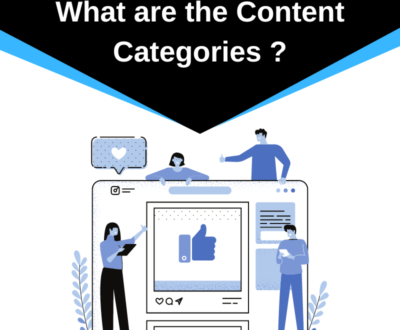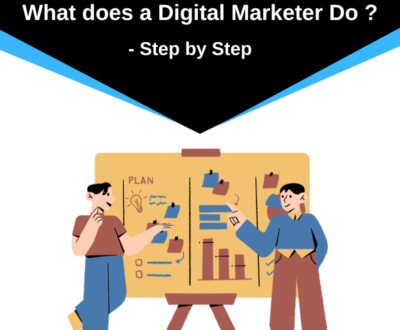In the ever-evolving world of digital marketing, the importance of Search Engine Optimization (SEO) cannot be overstated. Among the various aspects of SEO, on-page SEO plays a critical role in determining how well your website performs in search engine rankings. In this blog post, we will delve deep into what on-page SEO is, its importance, best practices, and actionable strategies you can implement to improve your website’s visibility.
What is On-Page SEO?
On-page SEO refers to the practice of optimizing individual web pages to rank higher and earn more relevant traffic in search engines. Unlike off-page SEO, which focuses on external factors like backlinks and social media engagement, on-page SEO is entirely about the content and HTML source code of a page. This includes everything from the text and images to the structure and meta tags.This involves enhancing content quality, HTML elements, and user experience factors on the page itself.
Key Components of On-Page SEO
- Content Quality
- High-quality content is the backbone of on-page SEO. Search engines prioritize content that provides value to users. This means your content should be informative, engaging, and relevant to the audience’s needs.
- Title Tags
- The title tag is one of the most crucial on-page SEO elements. It tells search engines what your page is about and appears as the clickable headline in search results. Ideally, it should be concise, include relevant keywords, and accurately represent the content.
- Meta Descriptions
- Although meta descriptions don’t directly affect rankings, they play a significant role in click-through rates (CTR). A well-crafted meta description summarizes the page’s content and entices users to click.
- Header Tags (H1, H2, H3)
- Header tags help structure your content, making it easier for readers and search engines to understand. The H1 tag usually serves as the main title, while H2 and H3 tags denote subsections, allowing for better content organization.
- URL Structure
- A clean and descriptive URL structure can improve user experience and SEO. URLs should be easy to read and include relevant keywords. For example, instead of a URL like www.example.com/p=123, a more user-friendly version would be www.example.com/on-page-seo-guide.
- Internal Linking
- Linking to other relevant pages within your website helps search engines crawl your site more effectively and improves user navigation. It also encourages visitors to spend more time on your site.
- Image Optimization
- Images can enhance the user experience, but they also need to be optimized for SEO. This includes using descriptive file names, adding alt text for accessibility and SEO purposes, and compressing images to improve page load speed.
- Mobile Responsiveness
- With the increasing use of mobile devices, ensuring your website is mobile-friendly is essential. Google uses mobile-first indexing, meaning it primarily considers the mobile version of a site when ranking pages.
- Page Speed
- Fast-loading pages improve user experience and reduce bounce rates. Google considers page speed as a ranking factor, so optimizing your site for speed is crucial for on-page SEO.
- User Engagement Metrics
- Factors like bounce rate, time on page, and click-through rates are indicators of user engagement. Engaging content encourages users to interact with your site, signaling to search engines that your content is valuable.
Why On-Page SEO Matters
On-page SEO matters because it helps search engines understand your content, improving your chances of ranking higher in search results. Additionally, it enhances user experience, leading to increased engagement and conversion rates.
- Improves Visibility and Rankings
- Effective on-page SEO techniques can significantly improve your website’s ranking in search engine results pages (SERPs). Higher rankings lead to increased visibility, making it easier for potential customers to find you.
- Enhances User Experience
- On-page SEO is not just about pleasing search engines; it’s also about providing a better user experience. Well-structured content, fast load times, and mobile responsiveness contribute to a positive experience for visitors.
- Boosts Conversion Rates
- By optimizing your content for your target audience, you can increase the likelihood of converting visitors into customers. Engaging and relevant content can lead to higher sales and improved return on investment (ROI).
- Facilitates Better Crawling and Indexing
- Search engines use bots to crawl and index websites. A well-optimized site makes it easier for these bots to understand your content and index it appropriately, improving your chances of ranking higher.
- Builds Authority and Trust
- High-quality content that meets user needs establishes your site as an authority in your niche. This builds trust with users, encouraging them to return and engage with your content.
Best Practices for On-Page SEO
Best practices for On-Page SEO include optimizing title tags and meta descriptions with relevant keywords, using clear header tags to structure content, and ensuring mobile responsiveness. Additionally, focus on creating high-quality, engaging content that meets user needs and includes internal linking to enhance navigation. Regularly monitor page speed and optimize images to improve overall performance.
1. Conduct Keyword Research
Before creating content, it’s essential to conduct thorough keyword research. This involves identifying the keywords and phrases your target audience uses to search for information related to your topic. Tools like Google Keyword Planner, SEMrush, and Ahrefs can help you find relevant keywords with a good search volume and low competition.
2. Create High-Quality, Relevant Content
Once you have your keywords, the next step is to create high-quality content that addresses the needs of your audience. Here are some tips:
- Answer Questions: Identify common questions your audience has and provide detailed answers.
- Use Engaging Formats: Incorporate images, videos, infographics, and bullet points to break up text and make your content more engaging.
- Update Regularly: Keep your content fresh by updating it regularly. This shows search engines that your site is active and relevant.
3. Optimize Title Tags and Meta Descriptions
Craft compelling title tags and meta descriptions that incorporate your primary keywords. Make sure they accurately reflect the content on the page. Here are some tips:
- Keep It Concise: Title tags should be around 50-60 characters, while meta descriptions should be around 150-160 characters.
- Include a Call to Action: Encourage users to click by including phrases like “Learn more,” “Discover,” or “Get started.”
4. Use Header Tags Effectively
Organize your content using header tags (H1, H2, H3) to improve readability and structure. Your H1 tag should include your primary keyword and clearly indicate the topic of the page. Use H2 tags for major sections and H3 tags for subsections.
5. Optimize URL Structure
Create clean, descriptive URLs that include relevant keywords. Avoid using long strings of numbers or characters. For example:
- Good URL: www.example.com/on-page-seo-tips
- Bad URL: www.example.com/page?id=12345
6. Implement Internal Linking
Use internal links to guide users to other relevant pages on your site. This not only helps with navigation but also distributes page authority throughout your site, improving overall SEO.
7. Optimize Images
Images can enhance user experience, but they also need to be optimized for SEO. Here’s how:
- Use Descriptive File Names: Instead of image123.jpg, use on-page-seo-guide.jpg.
- Add Alt Text: Include descriptive alt text that incorporates relevant keywords to improve accessibility and SEO.
- Compress Images: Use tools like Tiny PNG or Image Optim to reduce file sizes without sacrificing quality.
8. Ensure Mobile Responsiveness
Make sure your website is mobile-friendly. Test your site on various devices to ensure it looks good and functions well on all screen sizes. Use responsive design techniques to create a seamless experience for mobile users.
9. Monitor Page Speed
Fast load times are crucial for user satisfaction and SEO. Use tools like Google PageSpeed Insights or GT metrix to analyze your site’s speed and identify areas for improvement. Common ways to enhance page speed include:
- Minimizing HTTP Requests: Reduce the number of elements on your page.
- Enabling Compression: Use Gzip to compress files and reduce their size.
- Using Browser Caching: Leverage browser caching to store frequently accessed files locally.
10. Analyze User Engagement Metrics
Regularly monitor user engagement metrics like bounce rate, average session duration, and click-through rates. Use tools like Google Analytics to gather insights about how users interact with your content. Adjust your on-page SEO strategies based on this data to improve user engagement.
Basic On-Page SEO Mistakes to Avoid
Common on-page SEO mistakes to avoid include keyword stuffing, which can harm readability and user experience, and neglecting to optimize title tags and meta descriptions, leading to lower click-through rates. Additionally, failing to ensure mobile responsiveness can deter users and negatively impact rankings. Ignoring internal linking also limits site navigation and the flow of authority.While implementing on-page SEO strategies, it’s essential to avoid common pitfalls that could hinder your efforts. Here are some mistakes to watch out for:
- Keyword Stuffing
- Overusing keywords in your content can lead to a negative user experience and may result in penalties from search engines. Aim for natural keyword integration.
- Neglecting Mobile Optimization
- Failing to optimize for mobile users can lead to a poor user experience and high bounce rates, impacting your SEO efforts.
- Ignoring Meta Tags
- Meta tags play a significant role in click-through rates. Neglecting to optimize title tags and meta descriptions can result in lost traffic.
- Lack of Internal Links
- Failing to include internal links can hinder navigation and limit the distribution of page authority across your site.
- Overlooking Image Optimization
- Unoptimized images can slow down your site and negatively impact user experience. Always compress images and use descriptive alt text.
Tools for On-Page SEO
1. Yoast SEO
- Overview: A popular WordPress plugin that provides comprehensive tools for optimizing on-page SEO.
- Key Features:
- Real-time content analysis for keyword usage and readability.
- Suggestions for improving meta tags and titles.
- XML sitemap generation and management.
2. Moz Pro
- Overview: An SEO toolset that offers various features for improving on-page SEO and tracking performance.
- Key Features:
- On-page optimization tool that provides recommendations based on the current page.
- Keyword research and tracking capabilities.
- Site audits to identify technical SEO issues.
3. Google Search Console
- Overview: A free tool provided by Google that helps you monitor your website’s presence in search results.
- Key Features :
- Performance reports showing click-through rates, impressions, and average position.
- Index coverage reports to identify issues preventing pages from being indexed.
- URL Inspection Tool for analyzing specific pages and their optimization status.
4. Keyword Planner
- Overview: A tool within Google Ads that helps you find keywords related to your business.
- Key Features:
- Discover new keywords and see their search volume and competition.
- Plan keyword strategies for your content.
More from our blog
See all postsRecent Posts
- On-Page SEO: A Comprehensive Guide October 14, 2024
- The Role of AI in Modern Digital Marketing October 10, 2024
- The Four C’s of Digital Marketing. September 11, 2024









